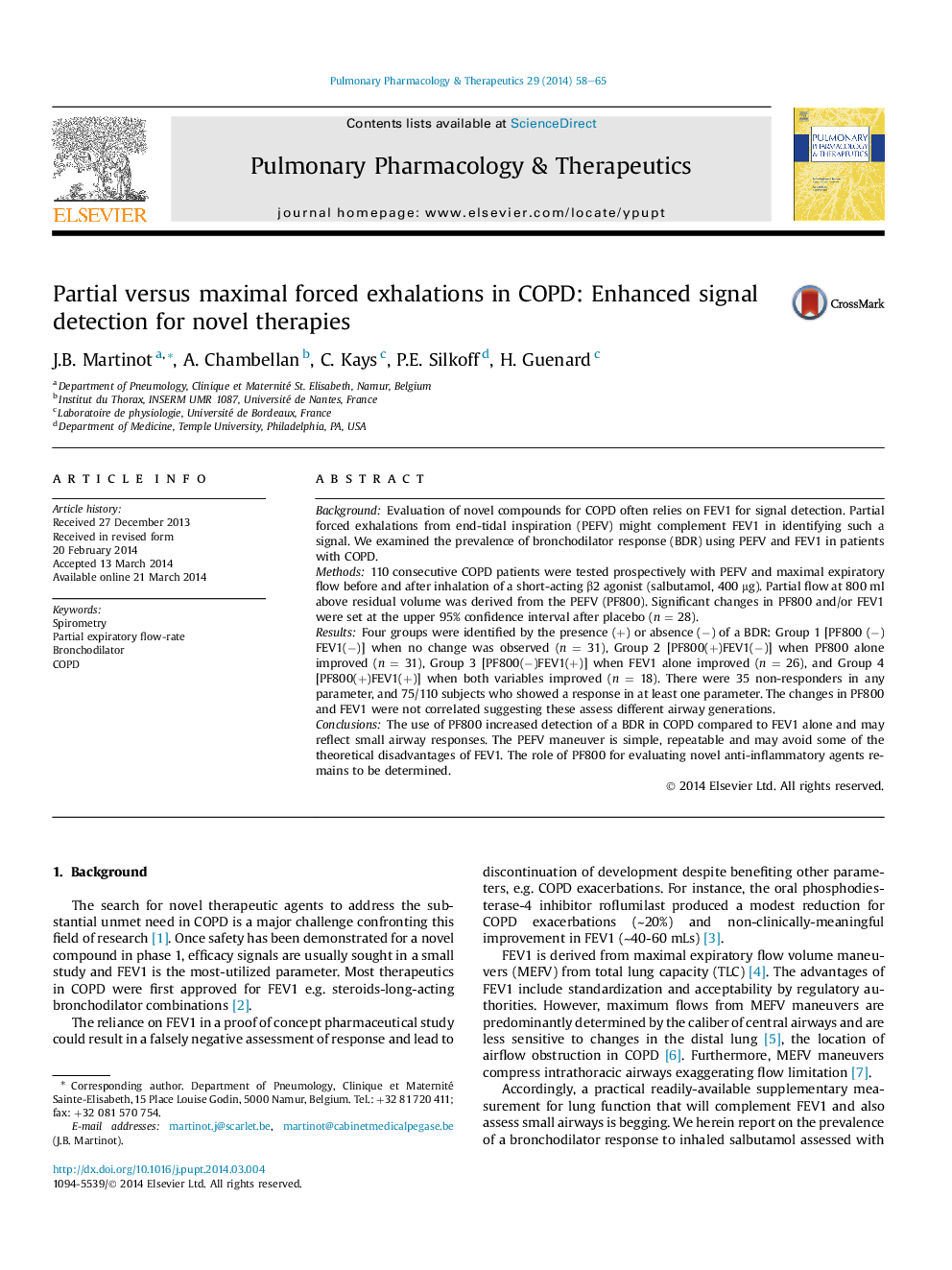| کد مقاله | کد نشریه | سال انتشار | مقاله انگلیسی | نسخه تمام متن |
|---|---|---|---|---|
| 2567000 | 1128303 | 2014 | 8 صفحه PDF | دانلود رایگان |

BackgroundEvaluation of novel compounds for COPD often relies on FEV1 for signal detection. Partial forced exhalations from end-tidal inspiration (PEFV) might complement FEV1 in identifying such a signal. We examined the prevalence of bronchodilator response (BDR) using PEFV and FEV1 in patients with COPD.Methods110 consecutive COPD patients were tested prospectively with PEFV and maximal expiratory flow before and after inhalation of a short-acting β2 agonist (salbutamol, 400 μg). Partial flow at 800 ml above residual volume was derived from the PEFV (PF800). Significant changes in PF800 and/or FEV1 were set at the upper 95% confidence interval after placebo (n = 28).ResultsFour groups were identified by the presence (+) or absence (−) of a BDR: Group 1 [PF800 (−)FEV1(−)] when no change was observed (n = 31), Group 2 [PF800(+)FEV1(−)] when PF800 alone improved (n = 31), Group 3 [PF800(−)FEV1(+)] when FEV1 alone improved (n = 26), and Group 4 [PF800(+)FEV1(+)] when both variables improved (n = 18). There were 35 non-responders in any parameter, and 75/110 subjects who showed a response in at least one parameter. The changes in PF800 and FEV1 were not correlated suggesting these assess different airway generations.ConclusionsThe use of PF800 increased detection of a BDR in COPD compared to FEV1 alone and may reflect small airway responses. The PEFV maneuver is simple, repeatable and may avoid some of the theoretical disadvantages of FEV1. The role of PF800 for evaluating novel anti-inflammatory agents remains to be determined.
Journal: Pulmonary Pharmacology & Therapeutics - Volume 29, Issue 1, October 2014, Pages 58–65